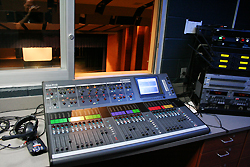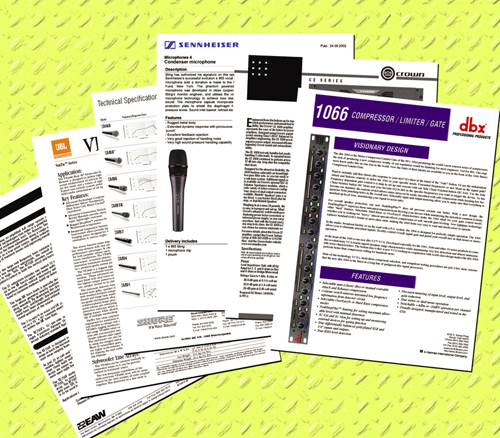
Touring crew will often ask for a thorough check of program and paging in the dressing rooms, if they value their paychecks.
Actors have a habit of turning off those speakers equipped with volume pots and then throwing tantrums when a call to the stage is missed.
A list of the paging system that includes the details of the installation pathways can aid in troubleshooting.
I once had a paging system partially fail in between shows, but because only one “trunk” of this 70-volt system had failed, I was able to determine that some workmen installing a CCTV system had evidently drilled in just the wrong place in one wall.
I wish I could claim that my paging system list helped save the day. The truth is that this incident is the reason for the detailed chart I have today. Lesson learned.
System and microphone inventory. This is the most straightforward part of any tech package. A simple list of the microphones and any other audio equipment in the inventory, listed with columns for serial numbers, repair status information, and any other details deemed useful will suffice.
As with the backstage paging sheet, this page can be useful for taking inventory as well as for informational purposes. Providing it to visiting engineers along with a copy of the console input list will really speed up the process of creating an input list on those shows for which the house is providing production.
Product data. I’ve downloaded and printed product information from manufacturer web sites for some of the newer and lesser-known pieces of equipment in our sound system. The idea here is for anyone who is unfamiliar with a specific speaker or processor in the rig to be able to flip to the back of the folder and review details like power handling or frequency response of speakers.
These are the details that have no other place in the kind of “quick glance” overview found elsewhere in the package. On-line versions of a tech package could easily include a set of links to manufactures web pages for most of the items in an inventory.

Fellow house engineers out there, as well as you touring folks – I hope that this information is useful. It’s about communication, and the more we do it, the less we all goof up, and the better we all look (and most importantly, function in our jobs).
The day-to-day operation of a theatre or rock club is probably one of the least glamorous aspect of our industry, perhaps only second to last on the list, ahead of the fine art of amplifier dust screen cleaning.
But the small things a good house sound person and the crew do when no one is looking can be the very things that make for smooth running, enjoyable shows for all concerned.
Next time, the fine art of dust screen cleaning! (Just kidding.)
Mark E.P. Woods served as head of audio for a large performance theater, and now is the technical director theatre/convention center.
